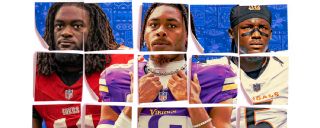|
Spring has sprung, the flowers are blooming, the birds are chirping. And given that we're a week out from the 2024 NFL draft, it's time for my favorite column of the offseason. Yes, today it's time for my annual mock draft that consists entirely of trades. For each of the 32 picks in Round 1, I will give you a trade that might -- emphasis on might -- make sense. So much of why trades occur has to do with the unique universe in which the draft exists. If the Cardinals decided to move on from quarterback Kyler Murray last offseason, they wouldn't have traded the No. 3 pick to the Texans for edge rusher Will Anderson Jr. Which means the Texans might instead have made a deal at No. 5 with the Seahawks, who wouldn't have ended up with cornerback Devon Witherspoon. And then maybe the Lions would have drafted Witherspoon, and the Jets would have ended up taking running back Jahmyr Gibbs. One small change impacts the entire draft. Subscribe: "The Bill Barnwell Show" Here, though, we have 32 trades that each take place in their own universe, so the trade you see for the first pick doesn't roll over to the next one and the one after that. I've tried to identify a unique set of circumstances for each pick in which a deal might make sense. A team in love with a particular player sees him fall to a spot where other teams might be ready to pounce. An organization that needs a quarterback falls in love with Drake Maye (North Carolina) or J.J. McCarthy (Michigan) and decides to make a massive move up the board. A team in need of a quarterback doesn't like its options and decides to try to go the opposite way. And then, of course, I've also tried to add a bit of insight into how executives running these drafts have operated in the past in terms of trading up or down. To my best ability, I've used the Jimmy Johnson chart and historical comps for what teams have paid to move up and down to inform the costs of these deals. Many of the picks you see below will be notated as something like "2-37," which translates to the team's second-round selection and the 37th pick overall in this draft. Future picks have been referenced with their year attached. I've also scattered a number of veterans who could be available for trades in various deals, including several star wideouts who could impact draft day. One veteran who certainly isn't available for trade is in the mix with the deal I have for the first overall pick, which is always the hardest deal to make. With a week to go before the draft, the Bears aren't trading out. Finding fair value in this sort of move is almost impossible, and even if I feel like I can, that deal is never actually going to happen. One sign of a fair trade is a deal in which both sides say yes. Our first deal is one in which both sides would say no and hang up the phone, but they would do so at the exact same time. And after that, we can get on to more plausible deals. Jump to a trade involving a veteran:
Brandon Aiyuk | Treylon Burks
Tee Higgins | Justin Jefferson
Trevor Lawrence | Aidan O'Connell
Trevor Penning | Pat Surtain
Courtland Sutton | Payton Turner  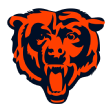 1. Chicago Bears (via CAR)Jaguars get: 1-1
Bears get: QB Trevor Lawrence, 2-48, 5-153 Yes, I recognize this is an absurd trade. If we're trying to find reasonably fair value for both sides, though? This makes at least a little bit of sense, and it's a deal in which both sides could win. From the Bears' perspective, they would be landing a player who has already established himself as a Pro Bowl-caliber quarterback when healthy. Lawrence's injury-riddled end to 2023 shouldn't erase what we saw from him over the prior year. Between Week 9 of 2022 and Week 9 of 2023, his 63.0 QBR was the ninth-best in the league. He completed 69% of his passes, threw 24 touchdown passes against six picks and led Jacksonville to a 13-4 record. As the No. 1 pick in 2021 and the most recent elite quarterback prospect to come out of college before Caleb Williams (USC), there are no concerns about Lawrence's pedigree or ability to play at an NFL level. He is still only 24 and has two years left on his rookie deal, although he is now eligible for a massive extension, which makes him a more expensive proposition than drafting Williams here. On the whole, Lawrence has played better than the average first overall pick so far, especially if you write off the Urban Meyer season as a coaching disaster. That sort of certainty could be appealing to the Bears: Lawrence would immediately become the most talented quarterback they've had in generations and would have the potential to become a Hall of Famer in Chicago. Williams' upside understandably appeals to Bears fans who have been talking themselves into him for months, but there are no guarantees he plays as well as Lawrence has. Williams is certainly much better-equipped to handle 2024 than Lawrence was as a rookie, but we won't know until we actually see Williams line up under center. Williams is 22 and has three extra years of cost control, which is why the Bears are landing extra draft capital along with Lawrence as part of this deal. For the Jaguars, this would be recognizing that they've essentially wasted most of Lawrence's three bargain-basement seasons as a starter. The disaster of the Meyer season led to a desperate second offseason in which they spent over the top to add solid-if-unspectacular players around Lawrence at receiver. Christian Kirk and Zay Jones were major upgrades, but Calvin Ridley wasn't able to live up to expectations, and they bowed out of bidding for him this offseason after signing Gabe Davis, failing to match Tennessee's offer. Middling offensive line play hasn't helped Lawrence stay healthy. Starting over with Williams would give the Jags another chance to build around a quarterback with franchise-passer upside while he's still cheap. Is either team even going to consider this trade for a second? Of course not. Will each team's fans hate it? Probably. I think fans of both teams will be blindingly enraged by this deal at equal levels, though, and while it'll never happen, that would be a sign that the trade is fair.
 2. Washington CommandersPatriots get: 1-2
Commanders get: 1-3, 3-68, 2025 second-round pick, 2025 fourth-round pick If the Commanders don't have a preference between Jayden Daniels (LSU) and Drake Maye, this would be one way for them to trade down and amass a meaningful amount of extra draft capital while still remaining in position to land one of the two standout quarterbacks. And for the Patriots, this would be a way for them to ensure they land the quarterback of their choosing if they have a significant preference. The draft capital they're giving up is a lot -- it's about what the 49ers sent to acquire Christian McCaffrey -- but it's not very much if it means landing the right quarterback. Why would the Commanders move down one spot when they can land the guy they feel slightly better about? Those other draft picks can be awfully valuable. The last time a team traded up from No. 3 to No. 2 was 2017, when the Bears moved up in a deal with the 49ers. Chicago chose Mitch Trubisky. The 49ers took Solomon Thomas and landed two third-round picks and a fourth-rounder for their troubles. A couple of the players chosen with those picks ended up being far more valuable than the guys taken in the top three: The 49ers used one pick on Fred Warner, while the Saints traded up to nab the other third-rounder, using it on Alvin Kamara.
 3. New England PatriotsRaiders get: 1-3, 2025 fifth-round pick, 2026 third-round pick
Patriots get: 1-13, 2-44, 2025 first-round pick, 2026 first-round pick This trade is inspired by a deal another Boston-based team made in a different sport and how it set them up for success in the years to follow. In 2013, the Celtics stunningly traded away two of the players who led them to an NBA title, shipping off Paul Pierce and Kevin Garnett to the Nets. In return, they received some salary ballast, three first-round picks and the ability to swap first-rounders in 2017. The Nets were trying to accelerate their path to contention, but the move didn't work. They won one playoff series with Pierce and Garnett before the wheels fell off. The Celtics ended up landing multiple top-five picks and turned those selections into Jayson Tatum, Jaylen Brown and their short-lived dalliance with Kyrie Irving. The deal became a prototype in the NBA, and teams like the Thunder have used similar moves with first-rounders well into the future into building teams with oodles of young talent. Now, this isn't exactly the same sort of deal. The Patriots wouldn't be sending a bunch of veteran players but instead the No. 3 pick, a selection that would potentially land them the franchise quarterback they've craved since Tom Brady's departure in 2020. If the Pats think one of Jayden Daniels, Drake Maye or J.J. McCarthy -- whichever passer makes it to No. 3 -- is a guy they feel confident about starting for the next 10 years, there's no trade to be had. Draft the quarterback and figure everything else out later. If director of scouting Eliot Wolf isn't sure about the quarterbacks on the board at No. 3, though, this is a trade that would give the Patriots an opportunity to take advantage of an organization that might be similarly misguided about being one big trade away from contending. The Raiders went 5-4 with Antonio Pierce as their interim coach, but the roster concerns that plagued them during the Jon Gruden and Josh McDaniels eras still exist. Interim coaches have a history of disappointing after getting the full-time role, and Vegas is still stuck in a division with Patrick Mahomes. I can understand wanting to take a swing on Maye or McCarthy, but I'm not sure the Raiders are a quarterback away. (Then again, who would have thought the Texans were a year ago?) Landing first-round picks in 2025 and 2026 would mean the Patriots having to deal with some semblance of delayed gratification for moving down, but if the Raiders are wrong about Pierce and a quarterback doesn't propel them forward, New England could get two top-five selections. It would have two first-rounders in each of the next two drafts, which would be plenty of capital to move around for a quarterback if the franchise isn't in position to take one. In this draft, the Patriots could take a swing on a passer on Day 2 (Michael Penix Jr.). With pick Nos. 13, 34, 44 and 68, they would also be in position to move back into the top 10 to grab a left tackle or wide receiver, just as the Cardinals did when they moved out of the No. 3 pick a year ago before moving back up to draft Paris Johnson Jr.
 4. Arizona CardinalsVikings get: 1-4, 4-104 (from Cardinals)
Cardinals get: 1-23, 2025 first-round pick (from Vikings), 1-8 (from Falcons)
Falcons get: 1-11 (from Vikings), 3-71 (from Cardinals) Speaking of the Cardinals, let's put together our first three-team trade by incorporating a move in which they trade down and then move back up. It begins with the oft-rumored trade up by the Vikings, who would likely become the first team in league history to take the fourth quarterback in the top five. Adding an additional first-rounder by paying a premium in terms of second-round picks doesn't really make sense for Minnesota unless a specific trade partner had an ask in mind; even if the Jimmy Johnson chart sees that as a modest loss for the Vikings, GM Kwesi Adofo-Mensah's other deals tell us he doesn't really value picks internally by that traditional model. Moving up would cost the Vikings a pretty penny -- three first-round picks. Given that they don't have second-round picks in 2024 or 2025 or a third-round pick this year, though, there's not really any other way for them to get this deal done without including those future first-rounders. They do land a fourth-rounder back from the Cardinals, which helps a tiny bit, but this is really about the quarterback. If the Vikings believe J.J. McCarthy is their guy and getting ahead of the other teams that might trade up for him in this range is what they need to do to get a deal done, it's possible to contort the trade math to make it work for a rookie passer. The Cardinals would pick up multiple first-rounders for passing up the opportunity to draft Marvin Harrison Jr. (Ohio State), but this would be a way for them to still get in position to take one of the top three wideouts in this class. If the top four picks are quarterbacks and the Titans do what everyone expects and take a tackle at No. 7, one of Harrison, Malik Nabers (LSU) and Rome Odunze (Washington) will still be on the board at No. 8. The Bears and Jets would both be plausible landing spots for whichever wide receivers are left at Nos. 9 and 10, so the Cardinals would need to get ahead of them to ensure landing one of the class's high-end receivers. Arizona would have seven top-100 picks after the Vikings trade, so giving up a third-round pick to move up three spots wouldn't cost GM Monti Ossenfort much sleep. The Falcons, who are in the market for edge-rushing talent, could easily drop three spots and still be in position to land their pick of the defensive players in this class. With three third-round picks, Atlanta would also have a lot of flexibility if it wanted to then move up in the second round for another defensive piece. If this trade is confusing, break it down into two deals. The Vikings get the No. 4 pick and a fourth-rounder for Nos. 11 and 23 and a 2025 first-rounder. The Cardinals then send Nos. 11 and 71 to the Falcons to move back up to No. 8. Easy!
 5. Los Angeles Chargers49ers get: 1-5, 6-181
Chargers get: WR Brandon Aiyuk, 1-31, 3-94 Let's find a creative way to get two teams what they need. The Chargers are bereft at wide receiver, and while it was a since-departed front office regime, they just used a first-round pick on wideout Quentin Johnston and didn't exactly land a building block. While the Chargers had to cut Mike Williams and trade Keenan Allen for cap space, they have more than $100 million in room in 2024, so they can afford to go after more of a sure thing if they remain flexible with the structure of a contract extension. Getting Justin Herbert a plug-and-play No. 1 wide receiver in Aiyuk is a move the Chargers would need to consider, even if it meant passing up one of the top wideouts in this class. Aiyuk has had multiple impressive seasons with the 49ers, has grown into the sort of complete player coach Jim Harbaugh would love and just turned 26 in March. He can be great with Herbert right now, and this would be a perfect landing spot for him in terms of a potential quarterback situation. Harbaugh could still go grab an offensive tackle at the bottom of Round 1. With Brock Purdy about to get much more expensive after 2024 and the 49ers already paying big money to Christian McCaffrey, Deebo Samuel, George Kittle and Trent Williams, this would be a creative way to save money. Sacrificing Aiyuk would allow them to move all the way up the board and draft his replacement, which could be yards-after-catch playmaker Malik Nabers. Re-signing Aiyuk and trading Samuel might make more sense, but I don't believe Samuel would command the same sort of return. This trade would value Aiyuk as being worth something like the No. 17 pick on the Jimmy Johnson chart, which feels fair in a year in which there are so many talented wideouts available through the draft. If I'm the Chargers, it would be tough to trade for a wideout when I could just stay put and land a potential franchise wide receiver in the top 10. Given Johnston's rookie flameout and the need to not waste any more of Herbert's prime, I could see a case for landing a more reliable solution and attempting to plug multiple holes in one draft.
 6. New York GiantsGiants get: 1-28, 2-60, 4-128, 2025 first-round pick (via Texans), 2026 third-round pick
Bills get: 1-6 In 2011, the Falcons shocked the league on draft day by moving all the way up from No. 26 to No. 6. It cost them two first-rounders, a second-rounder and two fourth-rounders, but the move turned out just fine for former GM Thomas Dimitroff, who landed future franchise icon Julio Jones. Jones wasn't even the top wideout taken in that class, as he was drafted two picks after the Bengals selected A.J. Green, but the massive move up for a star wideout didn't hurt an Atlanta team that eventually took Jones to Super Bowl LI. Could the Bills make the same sort of move up for Malik Nabers or Rome Odunze? There's certainly a need for them at wide receiver after losing Gabe Davis in free agency and trading Stefon Diggs for a second-round pick. And unlike the Giants, who are in somewhat of a rebuilding period given Daniel Jones' uncertain future and their disappointing 2023 campaign, Bills GM Brandon Beane probably wants someone who can help Josh Allen win right now. Calling up former assistant Joe Schoen to try to make a dramatic move into the top 10 for one of the top wideouts makes sense. Giants fans frustrated by their receivers would raise major questions about the organization trading down to allow another team to take a wideout, but if there's ever a time to make that move, it's in this draft. With one of the deepest wide receiver classes in recent memory on the books, New York would have Nos. 28, 47, 60 and 70 all available and potentially in play for multiple wide receivers. It could take a wideout at No. 28 and then move up again into that range for a second wide receiver. A team that has been in rough cap shape for several years and rarely traded down during the prior 15 years could use more draft capital and cost-controlled talent.
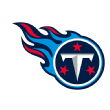 7. Tennessee TitansCardinals get: 1-7, 2-38, WR Treylon Burks
Titans get: 1-4, 3-90 The Titans desperately need a left tackle. Jaelyn Duncan and Nicholas Petit-Frere don't project there in the long term. Peter Skoronski, a first-round pick in 2023, played left tackle in college but is probably going to stick at guard as a pro. The Andre Dillard signing failed from last offseason in spectacular fashion. GM Ran Carthon has addressed wide receiver and multiple levels on defense in free agency this offseason, but he has conspicuously neglected to add any help at tackle. I would be shocked if Tennessee didn't come away from this draft with a solution on Will Levis' blindside. One problem? Jim Harbaugh has been publicly hankering for offensive line help, even given that he has building block Rashawn Slater on the left side. If the Titans want to ensure they'll have their pick of the left tackles, they'll need to get ahead of the Chargers at No. 5. Doing so means trading with the Cardinals, who probably don't want to pass up the opportunity to take Marvin Harrison Jr. at No. 4, which would make this move costly. Adding another high second-round pick at the cost of a late third-rounder is probably enough to get this done for the Cardinals, especially given that they could still land one of Harrison, Malik Nabers or Rome Odunze at No. 7. They would also get to take a flier on a former first-rounder in Burks, who was drafted by the previous regime in Tennessee and is buried on the depth chart after the signings of DeAndre Hopkins and Calvin Ridley in consecutive offseasons. Burks is still only 24 and has mostly struggled with injuries as a pro, so adding a receiver who is owed just $4.7 million over the next two years seems like a logical move for Arizona to consider.
 8. Atlanta FalconsJets get: 1-8, 4-109, 5-143
Falcons get: 1-10, 3-72 With a relatively flat top of the draft at edge rusher and cornerback and a top 10 that is likely going to be offense-focused, the Falcons make sense as a team likely to trade down. I would be surprised if GM Terry Fontenot made a major move down the board unless a team paid a premium, but with the Bears and Jets both likely to look toward the offensive side of the ball, dropping down two spots won't hurt Atlanta much, if at all. Last year, the Jets might have been in position to draft Broderick Jones at No. 15, only for the Steelers to jump ahead of them and take the offensive tackle at No. 14. And, well, you saw what happened to the Jets' offensive line last season. The Bears could be looking toward wide receiver or left tackle, two positions New York GM Joe Douglas will likely be considering heavily as he tries to build the best possible team around Aaron Rodgers in 2024. Making a small move up the board to get ahead of Chicago would be a logical response to what happened a year ago.
 9. Chicago BearsBears get: 1-14, 2-45, EDGE Payton Turner
Saints get: 1-9, 3-75 While we've rightfully focused plenty of attention on the Bears landing two top-10 picks in this draft, they don't have much in the coffers after those two early picks. After trading for Montez Sweat and Keenan Allen over the past few months, Chicago has one pick on Day 2 and one pick on Day 3. It could look to trade down from here to get an extra selection or two. With Trevor Penning benched and Ryan Ramczyk's future uncertain because of an injury, the Saints would be moving up to get ahead of the Jets at No. 10 for an offensive tackle. The Bears would add another premium pick to the mix for their defense while taking a flier on Turner, a 2021 first-rounder who has played just 15 games over three seasons because of injuries. They could also be in the market for a tackle themselves, as mentioned above, but if Chicago wants to move forward with Braxton Jones on the left side, this would be a way to replenish some of its missing draft capital. (It could also use the No. 14 pick on a tackle.)
 10. New York JetsRaiders get: 1-10, 4-111
Jets get: 1-13, 2-44, QB Aidan O'Connell It's not out of the question that J.J. McCarthy is still on the board when the Jets pick here. Pre-draft quarterback chatter can turn out to be nothing more than idle speculation or near-misses. Remember that in 2021 the 49ers were reportedly interested in Mac Jones at No. 3 before he fell to the Patriots at No. 15. They were also considering Aaron Rodgers with the No. 1 pick in the 2005 draft, but when they chose Alex Smith, Rodgers fell all the way to the Packers at No. 24. Neither team ended up needing to move up the board to land its quarterback, although those two signal-callers obviously had very different effects on their respective franchises. In this scenario, I have to believe the three teams below the Jets wouldn't be willing to play a game of quarterback chicken. The Vikings, Broncos and Raiders all need a long-term solution at the position, and it wouldn't cost all that much to move up with the Jets and land that passer. There's a fun universe in which the Raiders get Davante Adams involved with this trade to reunite Rodgers and Adams, but nothing about Las Vegas' offseason has suggested the franchise believes it is in the middle of a rebuild. At the cost of a second-round pick, would the Raiders be willing to jump ahead of the Vikings and Broncos to land McCarthy? Neither team has a second-rounder in this draft to match Vegas' offer. The Vikings have another first-rounder (No. 23), but would they really send it to move up one spot? (The Jets don't have a second-rounder to send back, either.) In this deal, New York GM Joe Douglas would get back a top-50 pick after sending a second-rounder to the Packers in the Rodgers trade last year. The Jets would also get a potential backup for Rodgers in O'Connell, who exceeded expectations in a hopeless situation a year ago. And frankly, while moving down three spots in Round 1, they still might be able to draft the same player they wanted at No. 10.
 11. Minnesota VikingsColts get: 1-11
Vikings get: 1-15, 3-82 I'll have a more deranged trade for the Vikings later on, but let's consider a scenario some Minnesota fans might not want to imagine: What if their favorite team can't successfully trade up for a quarterback? There's a universe in which the Cardinals and Chargers insist on drafting much-needed wide receivers at Nos. 4 and 5 before the Giants decide to take their post-Daniel Jones quarterback by landing J.J. McCarthy at No. 6. Even if Bo Nix (Oregon) or Michael Penix Jr. (Washington) might be plausible Plan B options for the Vikings, taking one of them here would be too aggressive, right? So, let's be realistic and try to recoup some of the draft capital the Vikings sent to the Texans to land that extra first-rounder (No. 23). If the Broncos and Raiders aren't going quarterback, they could each use help in their secondary. The Colts could be looking toward cornerback, too, and while it's a little atypical to see Indy GM Chris Ballard both trading up in Round 1 and targeting a position he typically doesn't value, it's a clear point of weakness on a promising roster. This could also be a move to jump up ahead of the Broncos for impact tight end Brock Bowers (Georgia).
 12. Denver BroncosCardinals get: WR Courtland Sutton, 1-12, 2025 first-round pick, 2025 second-round pick
Broncos get: 1-4, 3-90 Should the Broncos instead be focused on trading down given their paucity of draft capital over the past few years and the state of their current roster? Yes. Do I believe Sean Payton is about to do that after what I saw last year? Not really, no. The Broncos have been remarkably quiet this offseason after the Russell Wilson trade, and while that's partly a product of their cap situation, Payton surely has to be thinking about what's next for this team at quarterback. Jarrett Stidham is a reasonable placeholder for now as a bridge signal-caller, but nothing about his play so far has suggested the 2019 fourth-rounder is guaranteed to emerge as a future starter. If the Broncos do want to move up, it's going to cost them. The Cardinals might prefer this offer to what they would get from the Vikings for a couple of reasons. One is that they would be landing a future first-round pick from a team that projects to be very bad next season. Arizona GM Monti Ossenfort made that same sort of move in moving down with the Texans last year. The trade proved to be a false hope given how quickly Houston emerged as a playoff team with C.J. Stroud, but it was a worthwhile risk to take. The Cardinals would also send a player who can help Kyler Murray and the offense now in Sutton, who is 29 and has two years remaining on his existing deal. They would miss out on the opportunity to draft one of the top three wide receivers by dropping down to No. 12, but they would still have plenty of draft capital to add wideouts in a deep class. Arizona could also probably use this pick to take Brian Thomas Jr. (LSU) -- considered to be the fourth-best wideout in this class -- or move back into the top 10 to snag Rome Odunze. The Broncos would move forward with Marvin Mims, Tim Patrick and Josh Reynolds as their starting wide receivers.
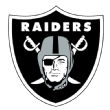 13. Las Vegas RaidersFalcons get: 1-13, 3-77, EDGE Malcolm Koonce
Raiders get: 1-8 The Raiders are the chaos team of the first round. Are they as close to contending as they seem to believe after signing Christian Wilkins? Will they go after a quarterback despite signing Gardner Minshew to compete with Aidan O'Connell? If not, the top 10 doesn't align with their needs, given that they are probably set at wide receiver and have a left tackle in Kolton Miller. Still, new GM Tom Telesco never traded down during his time with the Chargers from 2013 to 2023. They also have plausible needs elsewhere along the offensive line, at linebacker and in the secondary, so they could go in lots of different directions. Telesco repeatedly targeted the offensive line toward the end of his tenure with the Chargers to try to protect Justin Herbert. This trade would be a move up to grab a tackle ahead of the Bears and Jets, with whomever the Raiders take slotting in at right tackle ahead of Thayer Munford. In his Chargers run, Telesco got the quarterback and then started adding players to protect him; here, the Raiders might be proceeding in the opposite direction. The Falcons would move down five spots and add another third-round pick to their collection. They would also pick up a promising pass-rusher in Koonce, who had eight sacks and 17 knockdowns in 11 starts for the Raiders across from Maxx Crosby a year ago. Teams can never have too many pass-rushers, but Koonce is a free agent after 2024, and Las Vegas will probably want to see what it has in 2023 top-10 pick Tyree Wilson, who was anonymous as a rookie. Losing Koonce would hurt, but this deal would value him as being worth a fourth-round pick by the Jimmy Johnson chart, which seems fair.
 14. New Orleans SaintsChargers get: 1-14, 2-45, OT Trevor Penning
Saints get: 1-5 If there's no market in the top six to move up for a quarterback, the Saints might be able to jump ahead of the line to grab their favorite tackle in this class. The Chargers don't have to trade down and could comfortably consider a wide receiver or tackle themselves at No. 5, but they're also a team that could stand to add extra draft capital. (So are the Saints, of course, but why would GM Mickey Loomis start trading down in Round 1 now?) Moving up would cost the Saints their second-round pick and the guy they thought was going to be their left tackle of the future in Penning, who looks and feels like he needs a change of scenery after two disastrous seasons. Penning missed most of 2022 with an injury, and after starting 2023 on the left side, he was benched in Week 6 and barely played the rest of the way. The Chargers already have Rashawn Slater locking down the left side of the line, but Penning could compete with Trey Pipkins at right tackle or serve as the swing tackle. This deal would value him as being worth the 88th pick in the draft by the Jimmy Johnson chart.
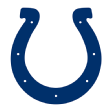 15. Indianapolis ColtsDolphins get: 1-15, 4-117
Colts get: 1-21, 2-55 GM Chris Ballard has been comfortable moving both up and down the board in the first two rounds of the draft during his time with the Colts, but he usually doesn't make dramatic moves in one direction or the other. This would be the sort of move I could see him considering; by dropping down six picks, he would pick up one of the second-round picks he has repeatedly prioritized over his tenure. The Colts have made 13 second-round picks since 2017, two more than any other team. (The Chiefs, Ballard's former employer, are second with 11.) The Dolphins are rebuilding their offensive line. They lost Robert Hunt to the Panthers this offseason, while Connor Williams wasn't re-signed after tearing his ACL. Terron Armstead is a potential cap casualty after the season given his age (32) and frequent injury history. The Seahawks, Bengals, Rams and Steelers all sit between Nos. 15 and 21 and could plausibly be thinking about targeting help at tackle or guard, so the Dolphins might need to jump ahead if they want to a lineman who can start for them as a rookie.
 16. Seattle SeahawksLions get: 1-16
Seahawks get: 1-29, 2-61, 2025 fourth-round pick In their first draft after Pete Carroll's departure, the biggest concern for GM John Schneider might be replenishing draft capital after sending a second-rounder for Leonard Williams and swapping a third-rounder for a fourth-round pick in the deal for Sam Howell. Schneider does have another third-round pick courtesy of the Broncos, but moving down would net the Seahawks that second-round pick and could put them in position to consider a move for Michael Penix Jr. in that range at the end of the first round. (The draft capital traded for Howell pegs him as more of a backup than a likely future starter.) The Lions might believe they're one impact player away after coming within a blown lead of making it to Super Bowl LVIII. They addressed their two holes on defense by signing Marcus Davenport and trading for Carlton Davis this offseason, but Davenport is coming off an injury-riddled season, while the release of Cameron Sutton opened up another hole at corner. Moving up to No. 16 would get Detroit ahead of teams that could be targeting pass-rushers (such as the Bengals and Rams) or cornerbacks (the Jaguars, Steelers and Eagles).
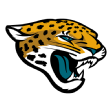 17. Jacksonville JaguarsBroncos get: 1-17, 3-96, 2025 third-round pick
Jaguars get: 1-12, 5-145 On paper, the Jaguars are set at key positions throughout their roster. In practice, their solutions might not play out as swimmingly. They don't necessarily need a wide receiver with Gabe Davis, Zay Jones and Christian Kirk set to start. They could be set at cornerback with Tyson Campbell, Ronald Darby and Antonio Johnson in the slot. Cam Robinson and Anton Harrison are the obvious choices at tackle. In practice, the looming Trevor Lawrence extension and the lack of ceiling those positions possess create some questions about the short- and long-term heights Jacksonville can reach. A year from now, Jones and Robinson will be free agents, Kirk could be a cap casualty and Darby and Johnson might not play their way into the 2025 starting lineup. Those positions seem set, but the Jags probably need to prepare for a possibility where they aren't filled by the end of 2024. I'd lean toward cornerback, where Darby is 30 and was out of the league for most of the offseason a year ago before signing a one-year deal with the Ravens, while Johnson has only played 171 snaps after being drafted in the fifth round last year. Moving up to No. 12 would get them ahead of the Raiders, who should be considering cornerback. The Broncos would land two extra third-round picks, which should come in handy given their rebuild and how many draft picks they set ablaze in the Russell Wilson deal.
 18. Cincinnati BengalsPackers get: 1-18, 3-97
Bengals get: 1-25, 2-58 The last time the Bengals moved up or down in Round 1 was 2012, so the most reasonable expectation for director of player personnel Duke Tobin & Co. might be staying put. But this isn't the "stay put" mock draft, is it? With Joe Burrow getting expensive, Ja'Marr Chase about to join him and Tee Higgins on the franchise tag, Cincinnati has to be thoughtful about how it retools its roster. The franchise felt the impact of losing Jessie Bates, Vonn Bell and even Eli Apple in the secondary a year ago, leading the team to re-sign Bell this offseason. I would argue the Bengals should consider trading down given how well the deepest parts of this draft hit their roster: They'll need replacements for Higgins, Trent Brown and Mike Hilton as soon as 2025, and getting an extra second-round pick to address those spots in the lineup won't hurt. Given Brown's injury history, adding a swing tackle should be a priority. The Packers have the youngest roster in football and a problem most teams would love to face: Where do they play their most promising young lineman? Zach Tom won the right tackle job last season and held his own, but ESPN's Rob Demovsky has reported the Packers think Tom can be a Hall of Fame center if moved there. If the Packers plan on moving Tom to center, they could move up here and grab a tackle ahead of the Rams, Steelers and Dolphins, all of whom could be thinking offensive line help. That move could be for a right tackle, or the Packers could move Rasheed Walker to the right side and install their new rookie on the left side as a long-term replacement for the departed David Bakhtiari.
 19. Los Angeles RamsBroncos get: 1-19, 2025 first-round pick, 3-99
Rams get: CB Pat Surtain, 2026 fifth-round pick You can't exactly be shocked at the idea of the Rams trading two first-round picks for a star young player, can you? GM Les Snead hasn't held onto a first-round pick since the trade up for Jared Goff in 2016, so while the Rams value Day 2 and Day 3 picks more than their slogan might suggest, we've seen them happily trade away picks in the bottom half of Round 1. Those picks have generally gone toward young talent with cost control remaining in their deals, with Matthew Stafford as an exception. They have used those picks to acquire Brandin Cooks and Jalen Ramsey, and they attempted to make another move for Brian Burns. In each case, they were targeting a young player who had already established himself as a star on a rookie contract. There aren't many players who are simultaneously playing at that level and for a team that's rebuilding. The Broncos might be the lone exception, which is why a Surtain deal would be plausible. The Rams already showed they were willing to spend this much for a complete cornerback when they acquired Ramsey in 2019, and Surtain might be the former Jags star's successor as the league's best player at the position. Surtain is excellent in coverage on the outside and in the slot, capable of shadowing the opposing team's top wide receiver, and is physical enough to hold his own as a tackler. He just turned 24 on Sunday and will make a combined $23.3 million over the next two years with his fifth-year option, giving L.A. plenty of runway as it negotiates a new extension with him. The Rams signed Darious Williams and Tre'Davious White this offseason, but Williams is 30, and White is coming off a torn Achilles and is on a one-year deal for $4.3 million. Acquiring Surtain would give the Rams a much-needed star on defense after the departures of Ramsey and Aaron Donald. It would also land the Broncos what they need even more: draft picks over the next two seasons, which would help them as they wander through the quarterback desert and build their post-Russell Wilson future.
 20. Pittsburgh SteelersCowboys get: 1-20, 4-119
Steelers get: 1-24, 3-87, 5-174 It's rare to see two of the league's most storied franchises come together on a trade, but there's some logic here for both parties. For the Cowboys, this is a chance to move up ahead of the Dolphins and Eagles for interior offensive line help. Assuming that Dallas pushed Tyler Smith to left tackle on a full-time basis, it could be looking to add Graham Barton (Duke) -- Mel Kiper Jr.'s top-ranked center -- to play guard or center. The Steelers could stand to add another offensive lineman, but they would probably be looking toward tackle as opposed to guard. This wasn't a deep team a year ago, and the days when they had homegrown talent waiting to burst through the ranks up and down the roster appear to be in the past. I'd like to see Pittsburgh add more depth across the board with this draft, and Mike Tomlin's team would have five top-100 picks if it did this deal.
 21. Miami DolphinsCardinals get: 1-21
Dolphins get: 1-27, 3-90 The Dolphins are used to having plenty of draft capital after the Laremy Tunsil trade and the deal with the 49ers in 2021 that would become Trey Lance, but those picks have come and gone. They're also down their third- and fourth-round picks in this draft, with the third-rounder taken away by the league and the fourth-rounder sent to the Broncos in the Bradley Chubb deal. With a handful of key contributors coming due for extensions, the Dolphins are going to need to replenish their core of cost-controlled talent; the only way to do that is with draft picks. Moving down would fetch Miami a third-rounder in the same area in which they landed De'Von Achane a year ago. The Cardinals aren't about to sell out to land one player, but with two first-rounders and three third-rounders, they have the ability to bounce around the draft if there's a situation they want to target. Here, they could jump ahead of the Eagles if coach Jonathan Gannon wants to beat his old team to a starting cornerback.
 22. Philadelphia EaglesSeahawks get: 1-22, 2-53
Eagles get: 1-16, 3-81 GM Howie Roseman lives to move up a couple picks in Round 1 and beat another team to the player he wants. By those standards, jumping six picks is a more significant leap, but the Eagles are being run a little differently in 2024 than they were in years past. Roseman has to seriously think about what's going to happen at cornerback in both the short- and long-term. James Bradberry and Darius Slay could both be gone in 2025, and Philadelphia might need a first-rounder to step in and play meaningful snaps if either of the two get injured this season. Moving up would get the Eagles ahead of the Jaguars in the cornerback mix. Philly has two second-round picks as a result of its trade with the Saints before the 2022 draft, but it doesn't have a third-rounder after recent deals for Kelee Ringo and Kenny Pickett. (The Ringo trade, where the Eagles dealt a third-rounder in 2024 for a fourth-rounder in 2023, was a heat check for Roseman.) The Seahawks are missing their second-rounder from the Leonard Williams trade, so this is one way for them to get back that missing capital, albeit at the expense of their third-rounder.
 23. Minnesota Vikings (via HOU through CLE)Patriots get: WR Justin Jefferson, 1-23
Vikings get: 1-3 Let's be calm for a second and talk through this. I don't think the Vikings want to trade Jefferson, and there are plenty of examples in which organizations have waited to get a deal done with a player and then eventually got them to sign on the dotted line. I also saw the Giants sign Odell Beckham Jr., insist they weren't going to trade him months after giving him an extension and then do exactly that. At the very least, until a Jefferson deal gets done, I'm keeping an open mind about the star wideout's future. This is a deal in which the Patriots and Vikings can both address their needs, albeit in a complicated way. From the New England side, independent of what it ends up doing at quarterback, the franchise desperately needs to land a playmaker who can change games at wide receiver. Jefferson is 24 and entering his prime. Whether it's Jacoby Brissett or another passer, the Patriots would make a historic upgrade in going from DeVante Parker to Jefferson at WR1, and they have the cap space necessary to sign Jefferson to a market-resetting extension. They would also be in position with the No. 23 pick to add an offensive tackle ahead of the Cowboys and Packers, both of whom could be in the market. They could then finish off their offense by using the No. 34 to select a quarterback such as Bo Nix or Michael Penix Jr. Quarterback, franchise wide receiver and potential left tackle of the future, all in one draft? I could see the case for this path, although it's certainly riskier than taking a quarterback at No. 3. The Vikings would notably be holding onto the No. 11 selection as part of this trade, which would allow them to get creative in replacing Jefferson. They could move forward with Jordan Addison and T.J. Hockenson as the bulk of their receiving corps, but would they want to draft Brian Thomas Jr. there? Would they try to move up to No. 8 to grab Rome Odunze? It's tough to look at any wide receiver and expect him to turn into Jefferson, but the Vikings could draft Drake Maye at No. 3 and then surround him with two first-round picks at wide receiver, Aaron Jones at running back and Hockenson at tight end. This trade would value Jefferson as being worth something like the seventh overall pick in a typical draft by the Jimmy Johnson chart, or the equivalent of the pick Nos. 24 and 26. That's probably a little lower than Vikings fans might expect, but it's also a product of a draft class that is so wideout-heavy. At the same time, the return for the No. 3 pick might also seem a little low if it produces the equivalent of three first-round picks in the 20s for the Patriots. This deal is roughly about fair.
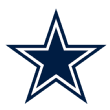 24. Dallas CowboysChiefs get: 1-24
Cowboys get: 1-32, 3-95, 5-159 The Cowboys are about to make a big financial splash, but it's going to be on players they already have. CeeDee Lamb and Micah Parsons are due new deals that should reset their respective positional markets. Dak Prescott holds all the leverage in his negotiations with the Cowboys, as the quarterback is entering the final year of his deal and cannot be franchised before the 2025 campaign. Those three players have combined to make just under $48 million per year on their current deals; their new contracts could add up to $135 million per season. The only way to make that work is to cut back elsewhere, which is why the Cowboys have let a handful of starters leave this offseason without replacements. They are going to need to draft well and draft often to thrive with such a top-heavy roster, so moving down and adding two extra picks is logical. Pick No. 159 was originally theirs, but they traded it away last year to use a sixth-rounder on Eric Scott, a safety who spent all of 2023 as a healthy scratch and turns 26 before the start of the season. The defending champs moved up from No. 29 to No. 22 two years ago, when they sent two picks to the Patriots and landed cornerback Trent McDuffie. The Chiefs were flush with selections then by virtue of the Tyreek Hill trade, which isn't the case any longer. This would be a move up to address a critical position: left tackle, where Donovan Smith is a free agent and Wanya Morris didn't impress as a rookie. Jumping the Packers and Ravens makes sense if there's somebody Kansas City trusts to protect Patrick Mahomes's blindside.
 25. Green Bay PackersColts get: 1-25, 2-58
Packers get: 1-15 It must be fun to be GM Brian Gutekunst. In addition to fielding the league's youngest team last season, the Packers have two second-round picks and two third-round picks to go with this selection, leaving them with plenty of flexibility as they approach the draft. There's no obvious weakness they need to address, which leaves them the ability to take the best available player five times in the top 100 picks if so inclined. I've already talked about the idea of Green Bay moving up for a tackle. Bouncing up to No. 15 would get them ahead of the Jaguars and a handful of other teams in that conversation. The Packers could also hit cornerback with both Jaire Alexander and Eric Stokes battling injuries over the past couple of seasons, which is another position the Jags might consider addressing at No. 17. Gutekunst would still manage to hold onto the second-rounder the Packers received for Aaron Rodgers at No. 41, while the Colts would land another second-round pick for their collection.
 26. Tampa Bay BuccaneersLions get: 1-26, 3-92
Buccaneers get: 1-29, 3-73 The Bucs have several needs that might just as easily be addressed early on Day 2, most notably along the interior of their offensive line. And one team that is probably not looking that way is the Lions, who have holes at edge rusher and cornerback and already have one of the league's best offensive lines. Moving down three spots would allow Tampa Bay to add another pick in the top 75, which is usually a reliable window for adding help at center and inside linebacker. The Lions would get back No. 92, which they sent to the Bucs earlier this offseason in the Carlton Davis deal.
 27. Arizona Cardinals (via HOU)Bengals get: 1-27
Cardinals get: WR Tee Higgins, 4-115 Want to build a devastating receiving corps in one day? Take Marvin Harrison Jr. with the No. 4 pick, then trade this selection for Higgins. With Harrison on a rookie deal for the next four years and Trey McBride still on one for two more seasons, the Cardinals could give Higgins an extension and roll out Harrison, Higgins and McBride as the three top playmakers in their passing attack for Kyler Murray. That's a fun group, even amid stiff competition for that title in the NFC West. As was the case with Brandon Aiyuk, the question for the Bengals is whether they really believe they can keep Higgins in the long-term. They've already paid Joe Burrow, and a massive extension for Ja'Marr Chase is soon to follow as early as this offseason. Would they really prefer to budget a DeVonta Smith-sized extension for Higgins, or is that money better used elsewhere? If they're going to move on, it's better to do it now and land a first-round pick in a deep class for wide receivers than wait a year and net a third-round compensatory pick in 2026. Higgins wouldn't draw the same sort of return as Aiyuk or Justin Jefferson for a number of reasons. He's already on the franchise tag, which leaves the Bengals star one more tag away from hitting unrestricted free agency. (A third tag is legal but not economically realistic.) Aiyuk and Jefferson are both on their fifth-year option, which leaves them another year further away from the open market. Higgins is coming off a lost, injury-hit season, and while Jefferson also missed time last season, his peak has been significantly more productive than Higgins'.
 28. Buffalo BillsRaiders get: 1-28
Bills get: 2-44, 3-77 Earlier, I made the case for the Bills moving way up the board and landing one of the top three wideouts. I actually prefer this side of the coin, where they lean into the depth and variety of this class and take more than one swing at wide receiver in the top 100. GM Brandon Beane would have Nos. 44, 60 and 77 to work with, and that should allow him to make more moves around Day 2 in the hopes of finding a difference-maker or two for Josh Allen. This is also the range in which teams picking in the top half of Round 2 will start wondering whether they should beat the opposition to the punch to take the fifth quarterback off the board. The teams at the bottom of Round 1 aren't going to draft a signal-caller, but they could all be in the market to trade their picks for the right offer. If the Raiders go for something besides quarterback at No. 13, this could be their move to get ahead of teams such as the Falcons and Giants for Bo Nix or Michael Penix Jr.
 29. Detroit LionsPatriots get: 1-29
Lions get: 2-34, 4-103 There's about to be a little mini run here of teams that should be looking for offensive line help. The Ravens, who pick at No. 30, lost three starters up front. The 49ers, who pick at No. 31, might have won the Super Bowl with better line play in key moments. And the Chiefs, who finish up the first round at No. 32, might want to invest in a long-term replacement at left tackle after seeing Wanya Morris struggle in a handful of starts a year ago. The teams picking early in Round 2 will be up calling the Lions if they see a lineman they like on the board. One of those teams would be the Patriots, who need a left tackle to block for the quarterback they'll presumably draft a No. 3. The new regime re-signed Mike Onwenu and added Chuks Okorafor from the Steelers, but neither will play on the left side. AFC East traveler Conor McDermott and former undrafted free agent Vederian Lowe are penciled in to compete on the blindside, but it would be a surprise if the Pats didn't have another solution at left tackle by the start of training camp. The Lions would move down five spots and regain a fourth-round pick after sending theirs to the Vikings in the T.J. Hockenson deal.
 30. Baltimore RavensChargers get: 1-30
Ravens get: 2-37, 4-105 One of the other positions that is going to be subject to teams moving up at the bottom of Round 1 is wide receiver. The Chiefs could consider taking one at No. 32. The Panthers pick at Nos. 33 and 39 and need to get Bryce Young more help. The Pats are at No. 34, and if they don't go for an offensive tackle, they could take a wideout. Teams are going to need to move around if a second-tier pass-catcher such as Adonai Mitchell (Texas) is available and seen as a priority on their board. The Chargers could take a wide receiver at No. 5, but if they go for an offensive lineman or trade down and otherwise don't grab a wideout with their top selection, this would be a place to grab a wideout to play alongside Quentin Johnston. New Chargers general manager Joe Hortiz just came over from Baltimore, so he probably has Eric DeCosta's number. Baltimore already has a pair of fourth-rounders, but adding another would allow it to further replenish a roster that was hit hard by free agency or package a couple of picks to try to move up on Day 2.
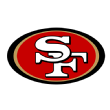 31. San Francisco 49ersRaiders get: 1-31, 4-135, 2025 fourth-round pick
49ers get: 2-44, 2025 second-round pick The other position teams will be thinking about in this range is quarterback, where we saw the Titans trade up early on Day 2 to draft Will Levis a year ago. The teams at the bottom of Round 1 and even the ones at the beginning of Round 2 don't need a quarterback, but the franchises that miss out on one of the top four quarterbacks in the first half of this draft are going to be thinking about getting active and trying to trade up for the next couple of passers on their board. The teams that pick at the start of Day 2 -- the Panthers, Patriots, Cardinals and Commanders -- need to use their picks to get help for their current quarterbacks, so they might not be available for trade. The Titans (No. 38) could be open for business, but what about the 49ers here? They need to recoup draft capital after making significant trades in prior years to add Christian McCaffrey (which worked out great) and Trey Lance (less so). Adding a second-round pick, even if it's in next year's draft, would be a valuable chip -- that's a pick they could even consider dealing at next year's trade deadline if they want to add an impact player in 2024. Teams including the Falcons, Raiders, Saints and Giants are in the mix to move up if they really like Bo Nix or Michael Penix Jr. This would be a leap forward for Vegas, which would add one of those rookies to the mix with Gardner Minshew and Aidan O'Connell.
 32. Kansas City ChiefsCardinals get: 1-32, 3-95
Chiefs get: 1-27, 6-186 If the Chiefs want to add a wide receiver in Round 1, they might want to get ahead of their arch-rivals from Buffalo, who pick at No. 28 and have a wide-open depth chart after trading Stefon Diggs and losing Gabe Davis in free agency. Moving up five spots would be in Kansas City GM Brett Veach's range, and while it would cost the Chiefs a third-round pick, beating the Bills to the punch for a wideout who separated from the pack on Kansas City's board would both help the Chiefs and potentially harm one of their biggest rivals. The Cardinals, who have featured in many of this mock's trades, would then have pick Nos. 32, 35, 66, 71, 90, 95 and 104, plus whatever they end up doing with the No. 4 pick. It's not the sexiest way to turn around a roster, but every single analytics department in the league would be nodding and looking longingly at all the second- and third-round picks GM Monti Ossenfort has amassed.
|

